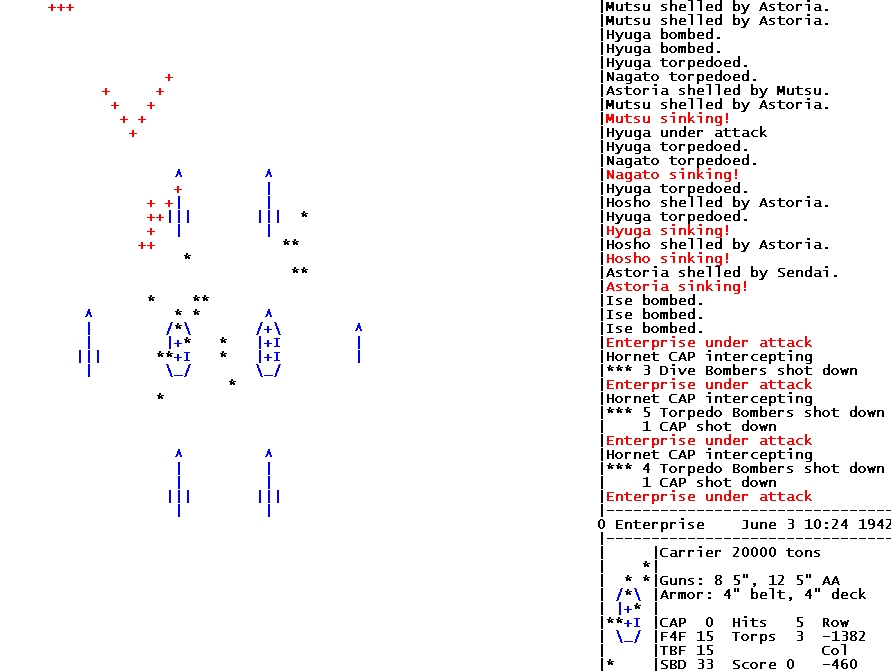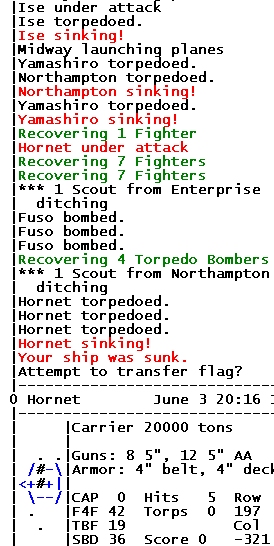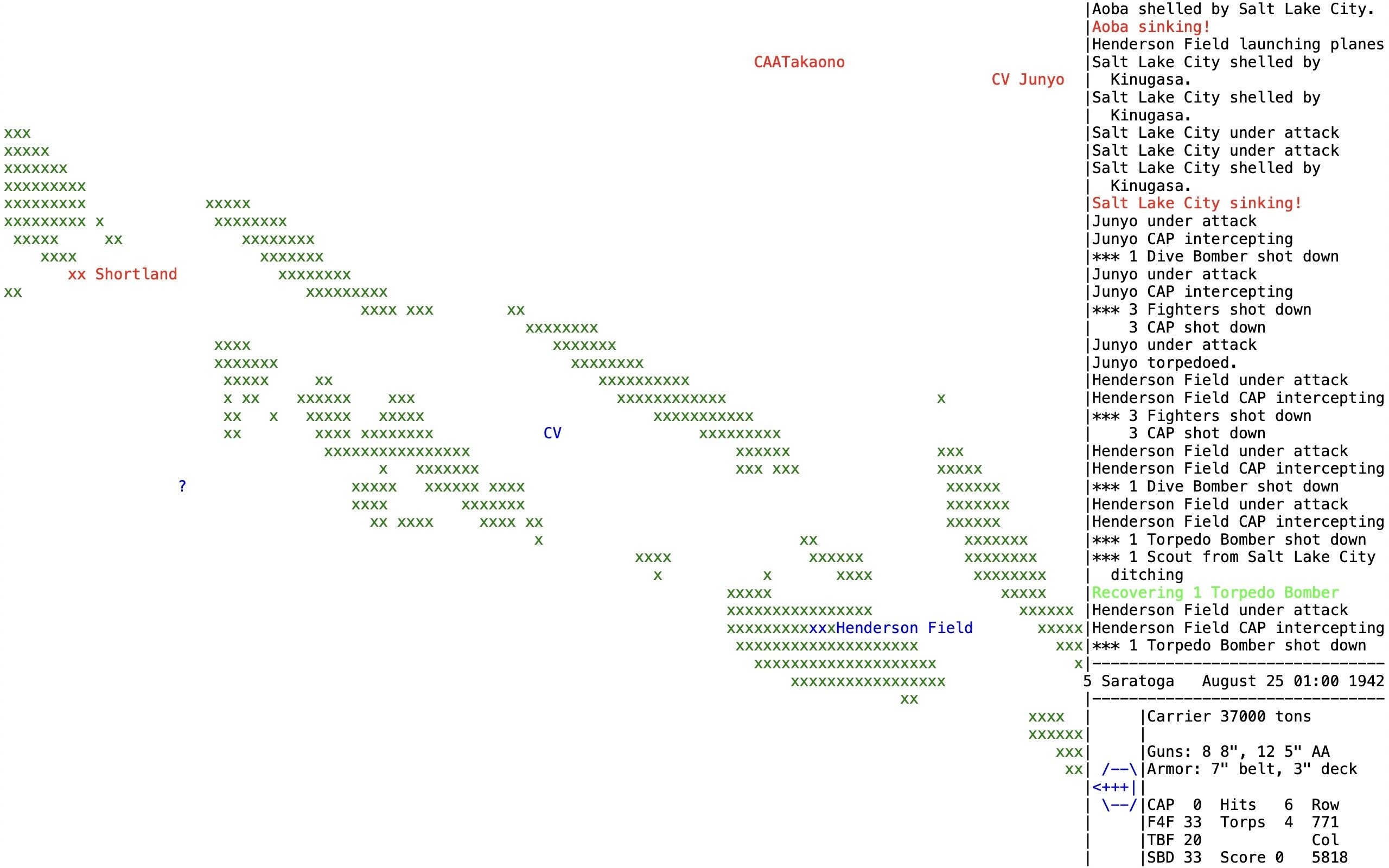Task Force Admiral looks seriously bloated when placed alongside this demo-blessed wisp. Based on a UNIX wargame David Riggle coded in his youth, action-packed Midway 1981 takes up less HD space than an uncompressed TFA screenshot yet offers numerous unexpected subtleties.

The full £6 version includes six scenarios covering all the major PTO carrier battles. In the demo, you get to Midway as either the USN or IJN. First pick one of the numerous ‘taskforces’ involved in the battle (even land bases such as Midway Island and the invasion flotillas bound for the Aleutians are playable) then select a vessel within that TF to act as a flagship (these include battleships) and you’re ready to go.

If you’ve chosen to oversee a CV or island airfield, you’ll be able to launch CAPs and scout planes, and organise strikes involving bombers and escorts. Novel features include manually directed flak, and a very elegant turn system (most actions advance the clock by three minutes). The embedded help file does a pretty good job of demystifying controls, but fails to mention that ship movement must be executed with the Shift key pressed.


Thanks for the heads up Tim, would never had known about it otherwise. I like the idea of it and I might buy, I just have one question please, if you don’t mind me asking? Does the full game have a “dark mode” option, or at least an option to change the bright white background to blue? Or maybe it might be better with a black background? Thanks.
Speaking of similar themed games that fit on a floppy, I’ve been reading the original LucasFilm’s Battlehawks 1942 and Their Finest Hour: The Battle of Britain manuals recently. And if you haven’t already got it, I highly recommend hunting down the book “Lucasfilm Games Air Combat Strategies” (483 pages by Rusel DeMaria and George R. Fontaine, with a great foreword by Larry Holland). Should be easy to find online in pdf. Currently on “Chapter 10: The Battle of the Coral Sea”.
It makes one realise that older games put more emphasis on producing thick weighty manuals than the game itself. It was more about reading a book – where your imagination does the work – than visual graphics. Indeed, watching TV or a film is a 100% spectator sport, with no interaction whatsoever. In the 1990’s we began to have “limited” interaction, with emphasis on reading materials and extras to do the heavy lifting of the combined experience.
Anyone remember novellas? For example, we got The Stele Chronicles book in the box when we bought TiE Fighter. And in Flight of the Intruder, we even got Stephen Coonts’ novel itself! So when we consider “the progression of video games”, we should remember it’s more about degrees and levels of interaction than graphics alone. Happy reading!